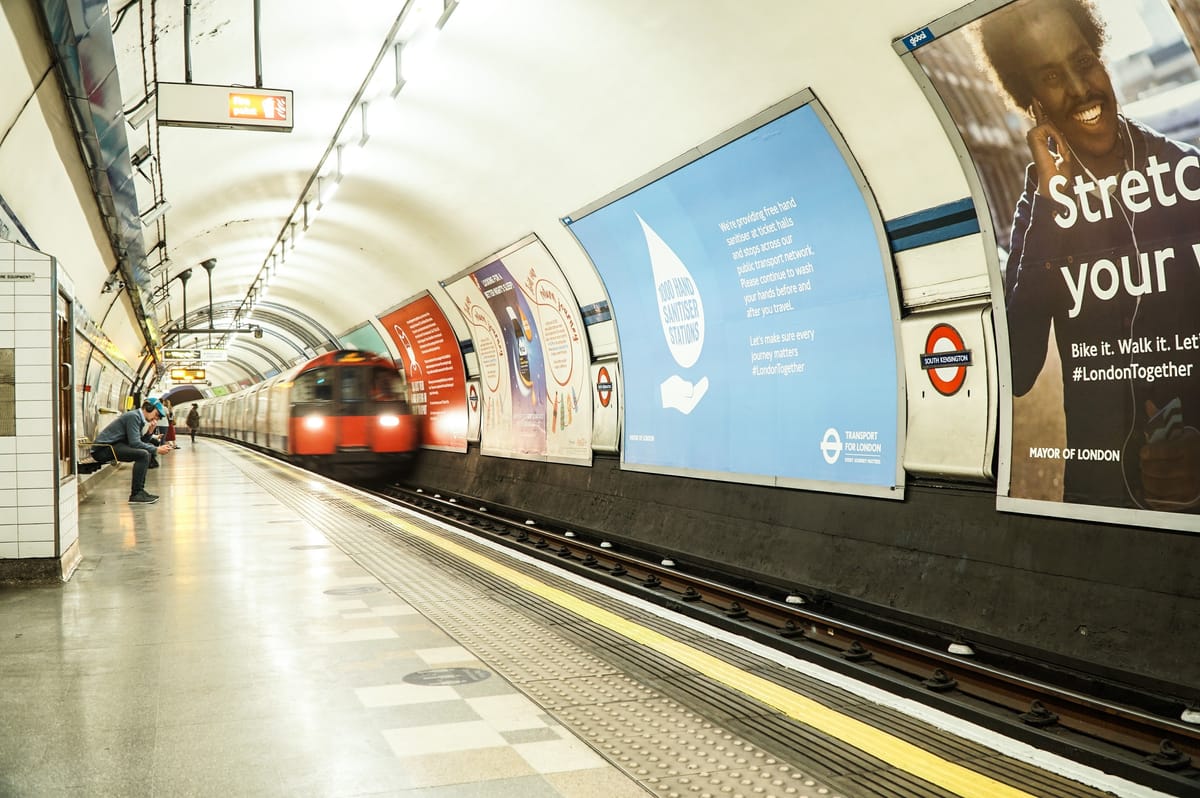Air pollution levels at South Kensington Station exceed WHO guidelines
Fine particle levels more than double WHO's recommended limits, study finds

Air pollution levels at South Kensington Station were found to have exceeded air quality guidelines set by the World Health Organisation (WHO), according to a new study by a team including engineers from Imperial’s Department of Materials. Fine particulate levels (PM2.5) were more than double the WHO's recommended limits. “Such high concentrations represent a health risk to the users and staff of the London Underground”, they report.
Pollution levels were found to increase over the day, peaking at busy times, and were at their worst between 6pm and 9pm.
South Kensington Station can be considered a worst-case scenario of exposure given that it is one of the deepest and oldest underground train systems in the world
The researchers monitored the concentrations, sizes and chemical compositions of airborne particles on the eastbound Piccadilly line platform (Platform 4). They found that the station contained double the amount of coarse air pollution particles (PM2.5-10) during operating hours, compared with non-operating hours. The team suggested that such particles could find their way to the nose and upper parts of the lungs, where they could cause respiratory problems.
Particulate matter (PM) consists of microscopic solid particles in the air and is considered to be amongst the most harmful forms of air pollution. According to the NHS, poor air quality is the largest environmental risk to public health in the UK.
“PM levels in the London underground system are much higher than in roadside environments”, the paper says. “These higher levels of particle concentrations in London Underground stations are primarily influenced by ventilation settings, depth and age of the tunnels, and are highest in the deepest underground lines. The South Kensington tube station can be considered a worst-case scenario of exposure given that it is one of the deepest and oldest underground train systems in the world.”

The authors found that the smallest particles, which are 1/800th of the size of a human hair, could reach deeper regions of the lungs, crossing into the bloodstream and “contributing to adverse cardiovascular and respiratory responses”.
“This is the first time the chemistry of the smallest particles, which can go deep into the lung and potentially damage cells, has been identified”, said Professor Alex Porter, who led electron microscopy analysis of the particles at Imperial College London.
In light of their findings, the paper encourages the UK’s Health and Safety Executive (HSE) to consider introducing separate lower exposure limits for smaller particles. “The HSE limits refer to compounds found in air pollution, and not the specific form/mixture of the air pollution we measure”, observed Professor Porter. “HSE guidelines are also for workplace exposure and not for the Underground tube environment.”
The authors have stressed the need for further research on the health implications of their work. “In the meantime, we recommend that consideration is given to improving ventilation on the London Underground where possible”, said Professor Prashant Kumar, study lead and Director of GCARE at the University of Surrey.
Professor Kumar accepted that “air pollution on platforms is a very complex problem to solve” and that “an effort is being made to clean the Underground during quieter periods”. He pointed to the newly opened Elizabeth line, where screens are placed between train and platform, as an “example of good practice”.
In a statement to Felix, TfL said it is currently working with Imperial College London on a separate project to understand the health impacts of dust on London Underground workers.
“Safety is our top priority and we have been working for many years to reduce Tube dust and will continue to do so”, said Lilli Matson, TfL’s Chief Safety, Health & Environment Officer. “Our monitoring has shown that dust levels on the Tube remain well below limits set by the Health and Safety Executive, but we are going further and have developed a number of innovative new cleaning regimes.”
“This includes the use of industrial backpack dust cleaners, which are one part of our multi-million-pound Tube cleaning programme. We are working with the authors to review the results of their study and to ensure we fully understand them and how to further reduce the levels further.”









